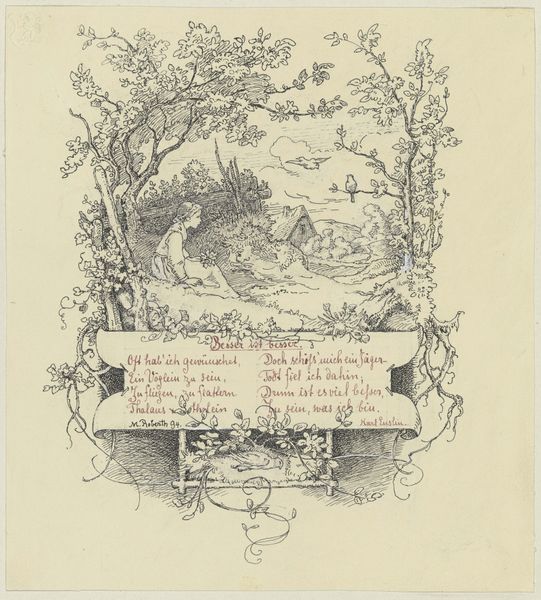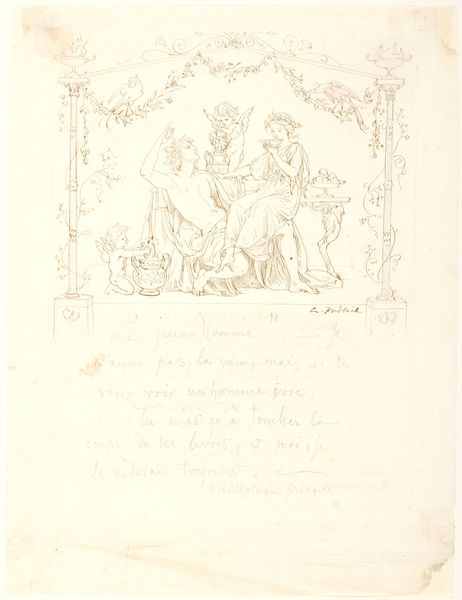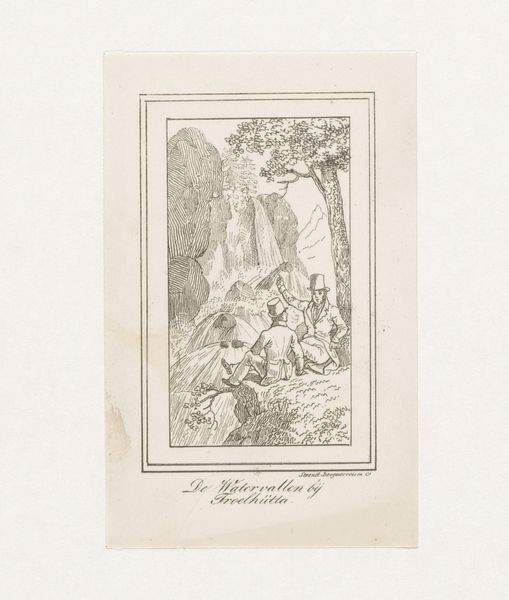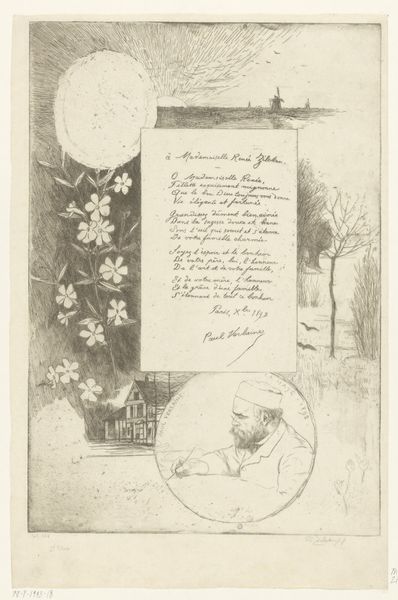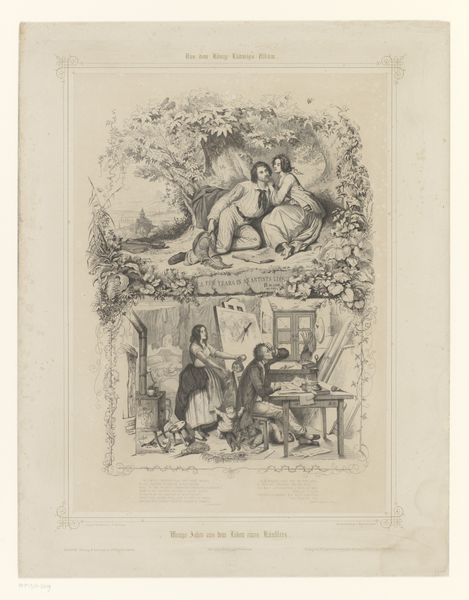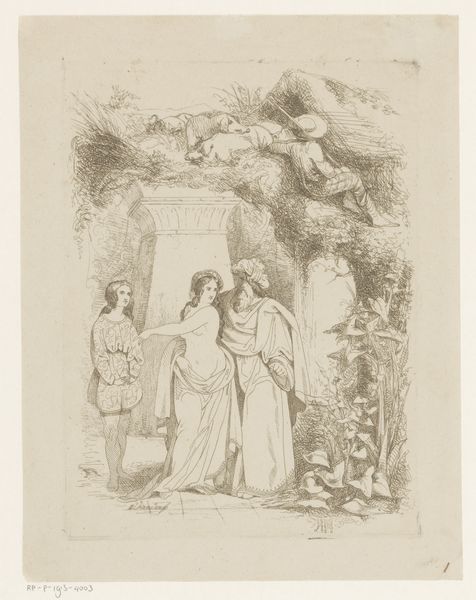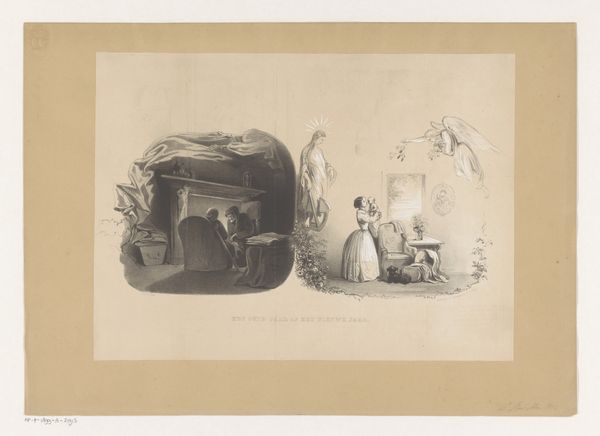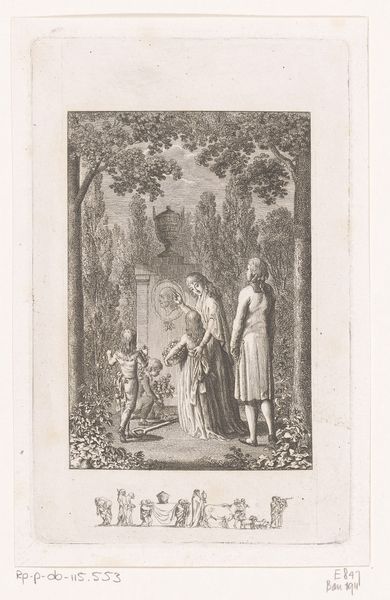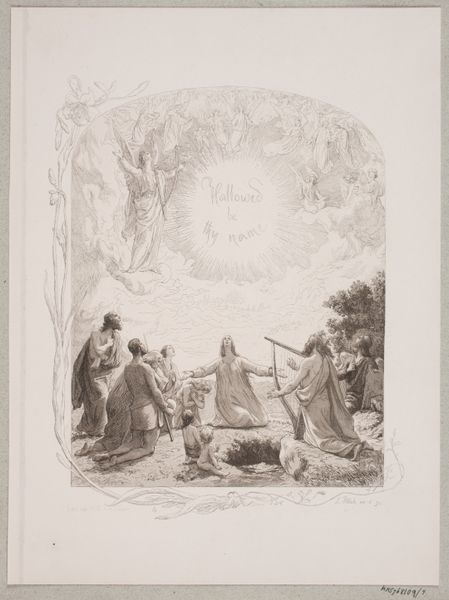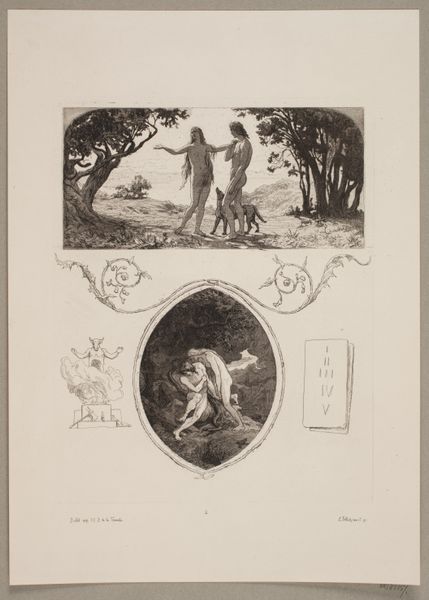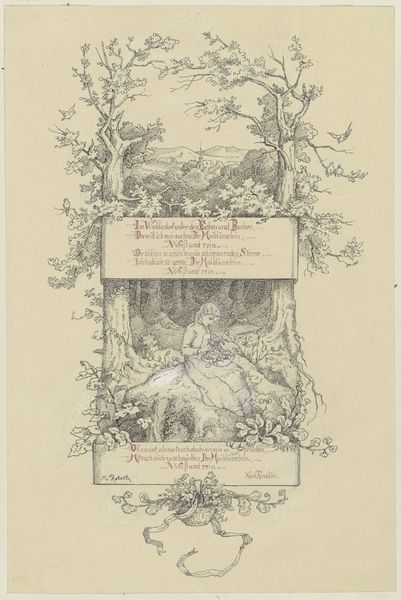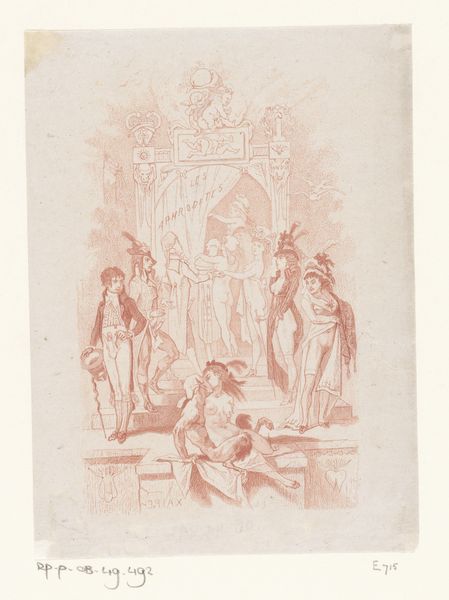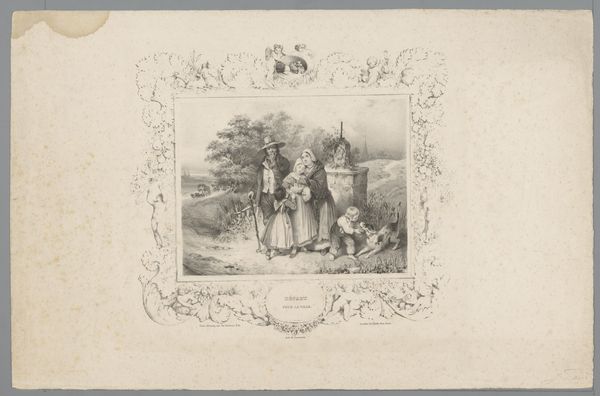
drawing, pencil
#
drawing
#
narrative-art
#
landscape
#
romanticism
#
pencil
Copyright: Public Domain
Curator: Looking at this, the first word that springs to mind is ethereal. There's a delicacy in the line work, a dreamlike quality that pulls you in. Editor: We're standing before "The Wandering Bell," a pencil drawing created by Victor Müller in 1843. It resides here at the Städel Museum. What’s striking to me is how Müller, even within the confines of Romanticism, engages with social symbolism of the period through visual narrative. Curator: That's it exactly, there is this odd narrative playing out. A figure appears to interact directly with a very prominent bell, while vignette scenes act as little windows along the edges. It almost reads as sequential art, something so interesting given the period. What can you tell us about Müller? Editor: Müller came of age during a politically tumultuous period in Germany. Institutions shaped the rise of nationalism and were simultaneously viewed with deep suspicion. The art academies served as conservative gatekeepers, dictating subject matter and style. Artists used their practices to comment and engage critically with politics. In 1843, revolution wasn’t quite yet on the horizon, but agitation was indeed bubbling in the universities and the press. I wonder if he’s imbuing the image of the "wandering bell" with some subtle commentary on institutional power. Curator: It feels like an interesting read on it. Given that the image feels very centered on womanhood, can we also consider that there's commentary on the traditional roles assigned to women during this period? The way she strides assertively contrasts against the quietness of the framed female figures. There are clear intersections here between class, expectations, and social agency. Editor: It’s so telling how Romanticism could be used to reinforce or critique. Consider the composition itself: the swirling vines framing scenes, drawing our eyes into pockets within the broader view. Curator: True, I mean, framing has often been read as exclusion, especially with images made by men regarding women and other historically marginalized individuals. Here, I question whether this composition is intentionally limiting the agency and autonomy of those other women, or liberating the role of women, in a sense, since they aren't tethered to the main protagonist. Editor: Seeing how these drawings offer so much beyond pure aesthetic appreciation highlights the exciting conversations occurring in museum studies today. It really exemplifies why we do what we do! Curator: Indeed. I’ll walk away considering how this drawing might be a lens into examining these ongoing discussions about autonomy, power, and social roles—then and now.
Comments
No comments
Be the first to comment and join the conversation on the ultimate creative platform.
